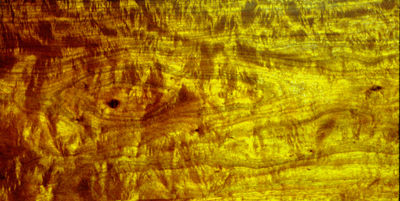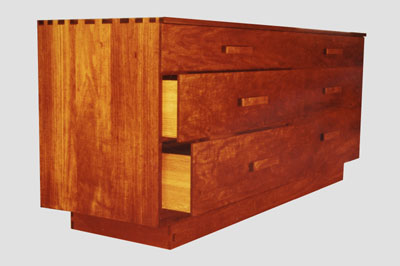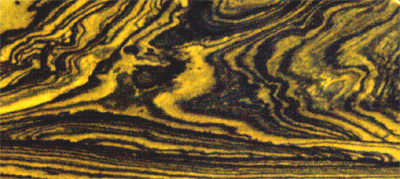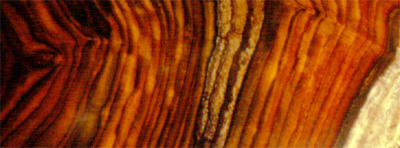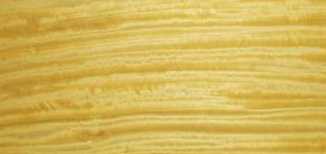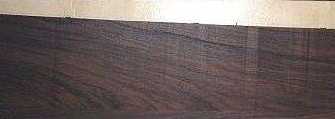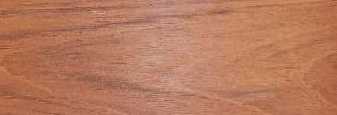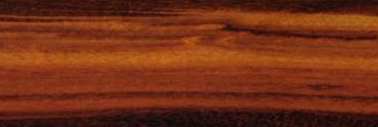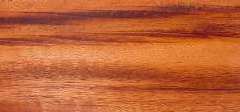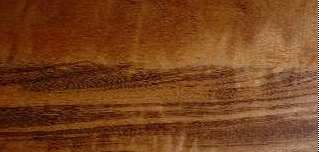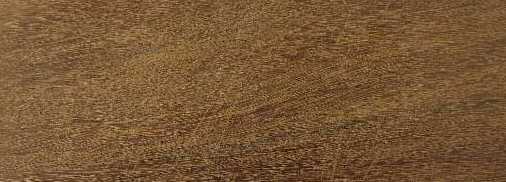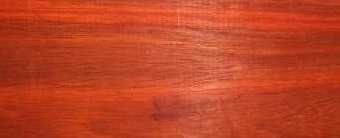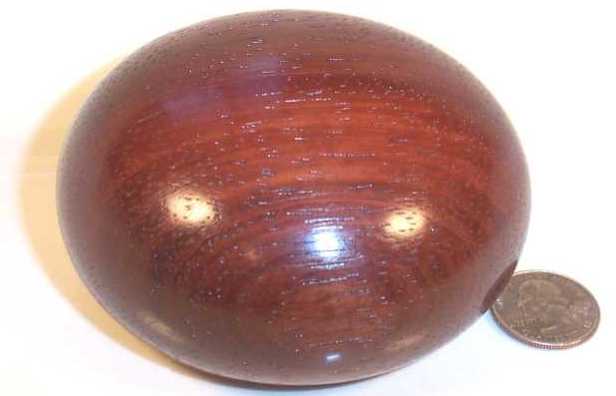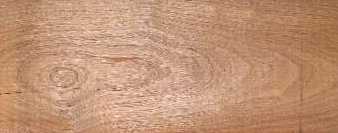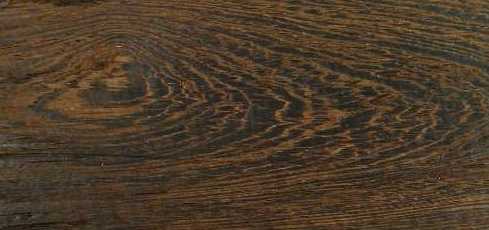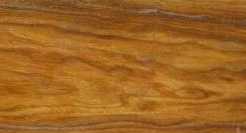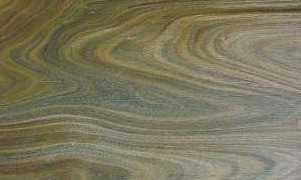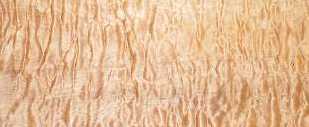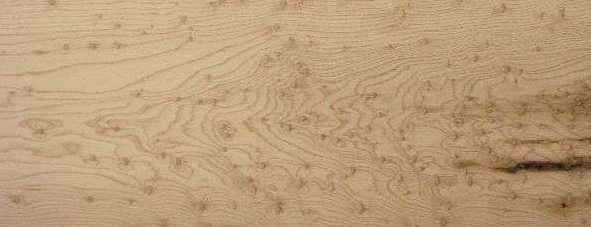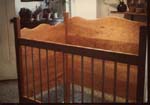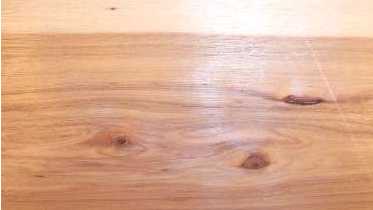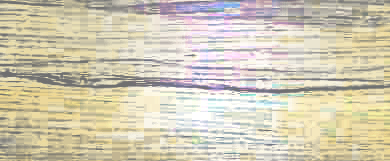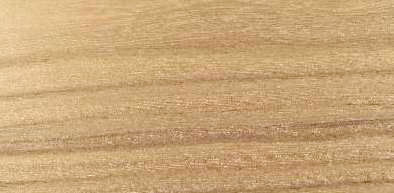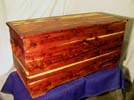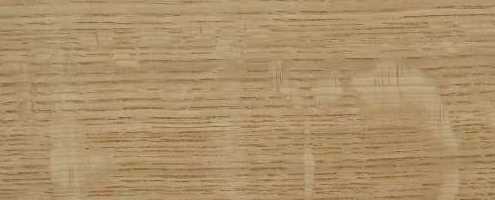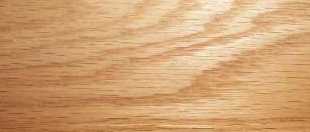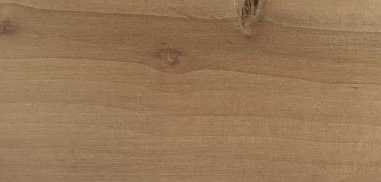|
Wood
Gallery |
||
|
Imported woods |
Domestic woods |
|
|
Arariba, a.k.a. Canarywood Source: Central America through Brazil This is an extremely hard and dense wood that provides beautiful, durable, wonderfully smooth furniture. When this wood is highly figured, it rivals the best rosewoods for beauty. highly figured
typical, tan hued
typical, orange or reddish brown hued
Availability: There are a few wide planks (16" +) of orange/reddish brown hued material, suitable for the tops of coffee tables, buffets, or dressers. The tan hued material is easily available through lumber suppliers. The wood is moderately priced. Examples: Cordia, a.k.a. bocote or zircote Source: Southern Mexico and Central America Cordia is a spectacularly figured wood. It has the hardness, beauty, and workability of rosewood, but in a very different color range. The stunning grain and rich colors make this a wonderful wood for smaller items and accessories.
Comments: The wildness of the grain, along with the fact that it comes from a smaller tree, makes cordia unsuitable for a very large pieces. However, cordia can be incorporated into larger pieces of furniture as panels, insets, smaller doors, etc.. Smaller furniture pieces, such as coffee tables, end tables, night stands, lamps, mirrors, etc., made from cordia are stunning, as are accessories, such as trays and bowls. Availability: We have a fair amount of cordia in stock suitable for accessories and small furniture. Typical prices for cordia are over $30 per bd. ft. placing this wood in the very expensive category. Examples: Coco-bolo (rosewood, Dalbergia retusa) Source: Southern Mexico and Central America Coco-bolo is a spectacularly colored and figured wood, probably the most spectacularly colored rosewood, with its rich reds, purples, and browns.
Comments Coco-bolo's richness of color and figure make it unsuitable for larger pieces of furniture. Also, coco-bolo tends to greatly darken upon long term exposure to sunlight. The result is a very attractive wood, but lacking in some of the spectacular color contrasts. More comments Also, while almost all highly colored tropical woods are allergenic, coco-bolo sawdust does nasty things to the respiratory system, and to the truly unfortunate, the skin (as a severe dermatitis). We do make things out of coco-bolo, but must do so in heavy protective equipment. The finished wood product is safe for the user; however, people with strong allergies might be wise to give this wood a pass. For furniture we usually suggest less expensive, and less toxic, alternatives. Availability: We have a reasonable number of smaller pieces of coco-bolo available for making into accessories and turnings, as well as for inlays into table tops and drawer fronts. We also have pieces suitable for small, decorative tables. We also have a large quantity of thin cocobolo veneer, suitable for door panels and other surfaces unlikely to see wear. Examples: East Indian Satinwood Source: Southeast Asia, also a similar, although unrelated wood, comes from Central America. Satinwood is prized for its luster, rather than its grain. The wood finishes to a rich yellow color that has great 'depth' visually.
In addition to true satinwood, we employ yellowheart, an unrelated S. American wood that has identical color, but is not as well figured in the less visible parts of satinwood furniture. Availability We have two very wide (6 ft. x 14-16 in.) planks of prime satinwood that would make either one dining room table, or a pair of coffee tables. We have created a coffee table design with these planks and using East Indian Rosewood edging for contrast (see proposed design).
East Indian Rosewood Source: Southeast Asia This is a true rosewood (Dalbergia), and is the darkest in color of the rosewoods
Availability We a few nicely figured boards available for small furniture and accessories. This is an excellent furniture wood for any size piece, but it is expensive. Examples: Jatoba a.k.a Brazilian "cherry" Source: Amazon region Jatoba is a very hard, durable wood frequently used for flooring. The color runs from reddish to golden brown.
Comments Because the wood comes from a very large tree, it doesn't have a lot of figure in the grain. However, it's rich warm colors and excellent durability makes it a very good choice for furniture that must wear well, such as a desk or dining table. Availability We were able to select some attractively grained boards that can be book-matched to provide nice figure. The wood is readily available from suppliers at reasonable prices. Goncalo Alves a.k.a Tigerwood, also sold as Brazilian "Koa" Source: Amazon region Goncalo Alves is the overall name for a group of Amazonian woods noted for hardness, nice color, and durability. Often goncalo alves is a plain, pleasant golden to light brown color. However, occasionally distinctive swirls and dark streaks occur, making goncalo alves a prized furniture wood. Goncalo
Alves - dark Light Curly
Comments Goncalo Alves is used for premium flooring due to its durability. It takes a wonderful finish. Availability We were able to select some figured boards, including an unusual curly board. This piece, which can be book-matched for doors or front panels, is a true example of why goncalo alves is also called Tigerwood. The wood is readily available from suppliers at reasonable prices. Ipe a.k.a Ironwood, Brazilian "Walnut Source: Amazon region Ipe is the hardest wood on this planet. . The color runs from dark brown to reddish to golden brown. The darker tones have a strong greenish tinge.
Comments Because the wood comes from a very large tree, it doesn't have a lot of figure or a pronounced grain. Because of its extreme hardness and resistance to moisture, it is used almost exclusively for flooring and decking. Ipe is so hard that its fire rating is the same as concrete!. It is also brutal to all hand woodworking tools (chisels, for example), and eats up most high speed steel tooling. Ipe can only be worked effectively with carbide tipped tools. If this weren't enough, ipe sawdust is extremely noxious and any splinters fester rapidly. We wear heavy protective gear when working with ipe. Even with all these problems, ipe is still a worthwhile furniture wood. It takes a nice polish and its durability finds good application in heavy use situations. In particular, we like to use ipe along the edges of tables, chests, or desks. We also use ipe insets in serving trays, where it is necessary to cut foods. Availability We ran into an unusual deal where we picked up a pallet load of ipe. Our ipe runs the entire color range from dark brown through red to light tan. As mentioned above, this material is very suitable for edging and inlays with other woods. Padouk (African) Source: West Africa This is a hard, durable furniture wood. The initial color is a bright orange red. Padouk's unusual color is widely used in contrast with lighter woods in a variety of novelty wooden accessories. freshly finished padouk
padouk after a couple years exposure
Comments Padouk's dramatic colors are unfortunately photosensitive--the bright reds darken to a deep reddish brown. This deeper color is actually more useful and attractive for furniture, as it goes far better with other home color schemes. For use in accessories (bowls, plates, trays, etc.) we use UV blockers which retard the color change for a couple of years. If you wish furniture made from padouk, please realize that your furniture will age gracefully to a less lavish, but very satisfying, deeper color. Availability Padouk is readily available commercially for reasonable prices. Also, we have a couple of wide (~20") boards that would make a wonderful credenza or buffet. Sapele Source: West Africa. This is a fine furniture wood used in place of mahogany. Sapele is harder and more lustrous than mahogany, but more difficult to work.
Availability We have enough sapele on hand to make a variety of different pieces of furniture. Sapele is a good choice when a warm reddish brown, but not highly figured, wood is desired. Wenge Source: West Africa. This is an unusual wood; it has a stunning grain resembling a very dark oak, and is very hard. Even though the texture is somewhat coarse, the wood takes a high polish.
Comments Wenge is suitable for any piece of furniture, as long as its dark color is compatible with the decor. Also, wenge works very well as a highlight in combination of with other woods. Availability We have a number of nice pieces of wenge on hnad suitable for small and medium size pieces of furniture. We also use wenge heavily in a variety of household accessories (mirror frames, serving trays, plates, bowls, etc.). Wenge is readily available, but expensive. Examples: Zebrawood Plain sawn Source: West Africa. Zebrawood's grain is flamboyant! Depending upon how it is sawn, zebrawood displays dramatic swirls of contrasting color, or strongly contrasting stripes (hence the name). Plane sawn
Quarter sawn
Comments Plane sawn zebrawood is not normally used for large pieces of furniture, partly because of its "busy" grain, and partly because of its tendency to warp. The narrow stripes of quarter sawn zebrawood are attractive and quite stable. A coffee table of quartersawn zebrawood we built 25 yrs. ago has remained rock solidly stable. Availability We have ample supplies of both plane and quarter sawn material for household accessories and small furniture. We can order quarter sawn lumber for larger pieces. Zebrawood has become a moderately expensive wood. Examples: Other imported woods we use We have the following woods on hand, but in limited quantities. We will use the woods below, except ebony, for small cabinets or side tables (< 30") . Mostly, these woods are used as accents on furniture made predominately of other woods. Many of these woods make beautiful household accessories, such as lamps, mirrors, trays, and turned items. Ebony Source:
Multiple species from Africa, Asia, and S. America, each slightly different in
color. Gaboon ebony, shown below, is completely black, except for the
white sapwood. Other ebonies are black, but with tan or yellowish
stripings. All ebonies finish to a beautiful, sensuous, luster. Availability Ebony trees are small and, until recently, not harvested sustainably. As a result, ebony I bought for $5 per board foot 25 yrs. ago, now sells for $50 /board ft.. We use ebony purely as a highlight or inlay against a light colored wood, such as maple or satinwood. We do have ample ebony in stock for this purpose, as well as for smaller turnings. Examples: Kingwood Source: South America. Kingwood one of the rarest and most beautiful members of the rosewood family. It has a pretty, but not spectacular, grain. However, kingwood's subtle coloring and smooth texture make it a prized wood. Unfortunately, kingwood, and its close cousin tulipwood (also a rosewood), come from very small trees.
Availability About 25 yrs. ago we bought a small quantity of kingwood. We planned then, as now, to use kingwood to make small pieces of furniture, such as curio cabinets, mirror/shelf combinations, etc. Also we are planning on using the kingwood in decorative trays and as inlays in larger pieces of furniture. Once we use our stock up, it is unlikely we'll purchase more, unless we find a supplier who plants more than they harvest. Purpleheart Source: South America. This bizarrely colored wood is a very common wood in S. America. The bright purple color (yes, it really does look like the picture!) eventually darkens to a purplish brown.
Comments The wood is hard, works easily, but tends to warp and crack. Our very dry Minnesota winters don't get along well with this humidity loving tropical wood. We use purpleheart in accessories and as a highlighting element in furniture made from other woods. Availability We have ample purpleheart in stock and can easily get more. Lignum Vitae Source: Central America. Lignum Vitae, which also grows in the Florida Keys, is the heaviest wood on earth.
Comments Lignum Vitae polishes to an incredible lustre. However, due to its extreme density, lignum vitae is very difficult to dry properly. We have never tried to build a piece of furniture with it, but have used it for accessories, particularly as bowls, vases, and goblets. The pieces are gorgeous, but will, over time, develop some small hairline cracks as moisture trapped inside the wood tries to equilibrate with our dryer climate. Turned pieces made from lignum vitae, even with the hairline cracks, still remain very beautiful. We offer a lifetime guarantee: If a piece from lignum vitae degrades unacceptably, we will gladly refund the purchase price. Availability We have a 8" x 8" x 18" chunk of this wood--about the size of a concrete block and weighing almost as much! The wood has a lovely grain and displays a wide variety of greens, grays, browns, and blacks. This piece came out of the University of Michigan Naval Architecture department. Because of its hardness and oil content, they formerly used lignum vitae as sleeve bearings for propeller shafts in large ships!! Example:
|
Koa Source: This wood is imported from the Hawaiian Islands. It is similar in texture and appearance to the Monkey Pod wood used for gift items. koa-typical pattern and color
Comments Koa works beautifully, very similar to walnut and cherry. It is also of similar hardness, and, like walnut and cherry, frequently develops gorgeous grain patterns. Availability: We have one wide board suitable for a coffee table or buffet top. There are a couple of highly figured boards which can be used for doors, drawer faces, and other highly visible elements of furniture. Koa has become extremely hard to get due to overharvesting. The wood is now extremely expensive. We will use the koa we have on hand for the one buffet and for smaller furniture pieces, but will not accept commissions requiring larger amounts of koa.
American walnut (juglans nigra) Source: Midwestern, Eastern, and Southern US Walnut is THE classic beautiful American wood. It grows widely and is a stable, easily worked furniture wood. Walnut, along with cherry, are the classic woods used for premium furniture in the US. typically colored, nicely figured walnut
Availability: We do nut have any unusually wide boards in stock, but can obtain them at premium prices. Walnut, however, looks very good when a number of boards are glued together to form a larger panel, such as a table top. We do have a number of figured pieces suitable for doors, drawer faces, etc., either as thick veneer or solid lumber. Despite its high status, walnut lumber remains reasonably priced. This is likely due to efforts made decades ago to extensively plant walnut trees and harvest them sustainably.
Mesquite Source: American Southwest, Mexico, and S. America Mesquite resembles a cross between rosewood and walnut. It is as hard, dense, and smooth as rosewood, the stability and ease of working of walnut, and the beautiful grain of both.
Comments Mesquite quickly develops reddish tones and ages to the color shown above. Most rosewoods, such as coco-bolo, continuously darken, but mesquite retains its rich reddish brown color. Like coco-bolo, mesquite is extremely allergenic; so we have to be heavily protected when working with it. Availability: Although mesquite doesn't usually grow to harvestable timber size in the US, we have source of supply in the Arizona desert. There, along riverbeds, it grows quite large, although very twisty. There are no restrictions as to the type of furniture we can build from mesquite. While the cost of mesquite is comparable to the more reasonably priced imported woods, we request a premium price for mesquite furniture, due to the need to work with extensive safety precautions and the large waste factor from the irregularly shaped planks of lumber.
Curly and Birds-eye Maple Source: Northern US. These two growth variants of the common maple are among the US's most spectacularly figured woods. Birds-eye figure occurs only in hard maple, while curly figure occurs in both hard and soft maples ("Soft" maples are still a hard wood, but come from a different set of maple species that aren't quite as hard as "hard" maple) Curly
Comments This wood is widely used for instruments and even for paneling in very expensive homes and offices. The fibers of the wood have cross-linked during growth, so light bounces around inside the wood creating a a liveliness and depth, a quality called chatoyance. More comments The nice thing about curly figure, is that it doesn't call attention to itself from across the room, like highly colored woods (Ex. padouk or coco-bolo) or dramatically figured woods (Ex. zebrawood or cordia) do. The beauty of curly maple is discovered when close up. Also, curly maple takes stain well without losing its unique visual effect. This allows the use of curly maple in many decor and color schemes. Availability We have several wide boards of curly hard and soft maple suitable for sideboards, buffets, small tables or very large trays. We also have a long, wide board of curly, soft maple suitable for a sideboard, buffet, or dresser top. Also, curly figured maple is widely available from lumber suppliers at a moderate premium price. We have a good supply of curly maple turning squares, suitable for goblets, candle holders, small lamps, etc.. Birdseye
Comments Birds-eye maple is ordinary hard maple with extremely interesting nodules or "eyes" scattered densely throughout the wood. The birds-eye effect occurs widely in hard maple, and it is not unusual to see an occasional plank in a maple floor covered with birds-eyes. Many of the comments made about curly maple regarding stain, compatibility with multiple decors, and subtle beauty apply to birds-eye maple as well. We made a large dining room table out of birds-eye maple, which was beautiful without overwhelming the viewer or the room. Availability We only have a small stock of birds-eye maple on hand, but it is readily available at a moderate price.
Butternut Source: Northern, Midwestern, and Appalachian US. The butternut tree is very closely related to black walnut--the two species look almost identical in the wild, and have very similar looking and tasting nuts. The wood grain of butternut and black walnut is very similar, but there are two main differences between these two woods: (1) Hardness--butternut is much softer, comparable to pine, and (2) butternut is very light brown in color.
Comments Butternut has a lovely grain, it's easy to work, and finishes nicely. With a good polyurethane finish, the wood will hold up well to use. Availability We have butternut in stock, and it is readily available at very reasonable prices. We also have turning squares and blocks of butternut for making lamps, bowls, and other accessories.
Cherry Source: North America. Cherry, along with walnut, is America's premier furniture wood. The wood is widely available, reasonably hard, works easily with both hand and machine tools, and takes a wonderful finish.
Comments From colonial times on, cherry, walnut, and mahogany have been the mainstays of fine American furniture. Cherry is an excellent choice for early American decor schemes, or for homes featuring a large number of antiques. Availability We currently do not have cherry in stock, but it is very easy to obtain. Over the last 20 years, cherry has become moderately expensive, equal to, or sometimes greater than, the price of walnut.
Pecan Source: Southern US. This is the same tree that supplies the delicious nut. While orchard pecans aren't allowed to grow tall, in the forest pecan trees grow quite large. Of the common American woods, pecan, along with hickory, is one of the hardest and heaviest.
Comments For some reason, possibly lack of sufficient quantity, pecan isn't used very much by our domestic fine furniture manufacturers (or even smaller shops). This is a serious oversight, as the wood works very well and finishes to a wonderful smooth luster. The grain can be interesting, but it is the subtle interplay of pastel colors that make pecan a beautiful furniture wood. Availability We have plenty of pecan in stock, most of which is 1 1/4" thick, which we use in making chairs, as it is far prettier than beech, maple, or ash--typical domestic woods used for chairs. We also have some figured boards that would make a fine dining room table. In fact, we'll use pecan in almost anything, we like it that much!
Hickory Source: Eastern North America Hickory and pecan are in the same family, and, are very similar in appearance and working properties. Usually they are sold together as a pecan/hickory mix. However, hickory, while an excellent furniture wood, lacks the elegance of pecan. Most species are coarser grained and don't finish to as high a luster. We are very careful to buy only from vendors who take the time to separate hickory from pecan.
Comments We use hickory for furniture, especially where durability is the prime criterion, and a fine finish is secondary. We are in the process of making a toy chest and will be using hickory; the idea being that children will go to great lengths to abuse a toy chest. Taking one's frustrations out on a chest made of hickory is an exercise in futility. The wood is TOUGH. We will also use hickory in connection with pecan furniture, in areas of the piece, such as internal shelving, where the difference between hickory and pecan is irrelevant. Availability Hickory is inexpensive and very easy to obtain.
Red Elm Source: Northern US. Due to the effects of Dutch Elm disease, this wood is not readily available. This is not the same species that provided such beautiful shade on our streets years ago. That wood, American or Gray Elm, is not a good furniture wood; it is unattractive, twisty, and hard to work. Red elm, also known as hard elm or slippery elm (yes, the bark is used medicinally), is very beautiful, works easily, and is reasonably stable.
Comments Red elm, along with pecan, are our favorite woods, either domestic or imported. The figured pieces of this wood, of which there are many, have a dramatic grain and a nice tan color with greenish hints. The wood is open grained, like oak, and takes stain well. Red elm takes a lovely finish. We will gladly build any piece of furniture using this wood. Red elm can be used anywhere a decor calls for oak, except that red elm is, in our humble opinion, far prettier. Availability We have ample supplies of red elm, and can obtain more.
Aromatic red cedar Source: Northern, Eastern, and Central US. This is the classic cedar chest wood. Technically, the wood is a juniper, not a cedar, but it is universally called red cedar. The wood has a wonderful aroma and a beautiful grain, knots and all.
Comments Red cedar is soft, knotty, twisty, not strong, and a pain to work with. For this reason, its use in furniture is limited to chests and closets, where various construction techniques, such as dovetailing, limit the wood's ability to make mischief. Availability We have lots of red cedar in stock, including some wide and thick boards. In addition to chests, we make various household accessories out of red cedar, such as bowls, coat racks, candle holders, knife holders, etc..
We have the following woods on hand, but in limited quantities. Should there be an interest, we can easily obtain these woods.
White and Red Oak Plain sawn white oak Source: Throughout North America. White and red oak are the most common American furniture woods. They are strong, durable, and attractive with a wide variety of grains. Quarter sawn white oak
Comments This grain of this variety of white oak comes from a special sawing method called quarter sawing. Instead of the broad grain stripes (see red oak below), the wood shows its grain in a series of fine line, interspersed with small, shiny patches (from plugged pores in the wood). Many pieces bought and sold in antique stores use quarter sawn white oak. It was particularly popular around the turn of the 20th century, mostly in the form of Gustav Stickley's Craftsman line of furniture. Availability We will build most any piece of furniture out of this easily available wood. We seldom use white or red oak in accessories, preferring the more figured or highly colored woods.
Red Oak
Comments Red oak is the "classic" oak look in furniture. When one thinks of wood furniture, the odds are the mental picture formed is of a piece of red oak furniture. Enough said; this is a good, honest wood, and we will build any piece of furniture with it. Availability Easily available.
Pearwood Source: Northern US and Northern Europe. This wood is very similar in appearance to apple wood, as pear and apple are closely related species. Like pecan, the beauty of pearwood comes from its luster, texture, and subtle interplay of colors.
Comments Pearwood makes wonderful display cabinets. Because it doesn't have a dramatic grain or coloring to call attention to itself, it is a perfect wood with which to build a china cabinet, curio cabinet, or other similar piece. Availability We have one large, wide piece of thick Swiss pearwood, that would make a lovely cabinet. The link below is to a piece built of applewood, the appearance is very similar.
|
|
